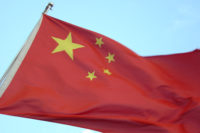US agriculture and related exports to China totaled $25.9 billion in fiscal 2015, comprising approximately 16 percent of all US agricultural exports, according to USDA. With these numbers and strong growth throughout the past decade, China has now cemented itself as the fastest-growing and highest-value export destination for US farm and food products.
China surpassed Canada to become the top US market in 2011 and had yet to relinquish that position. Though growth has slowed some in recent years, USDA says an increasingly urban population, a growing middle class and higher disposable incomes signal the potential for continued growth.
USDA forecasts considerable increases in China’s imports of coarse grains, soybeans, cotton, beef and pork by 2024. Furthermore, growth in US exports of horticultural goods, dairy and alcoholic beverages to China bode well for future opportunities within the consumer-oriented products sector.
“Due to China's severe cropland shortage and inexpensive labor force, US exports to the country have traditionally been dominated by land-intensive bulk commodities that China then processes for domestic consumption or export,” USDA says. “More recently, China’s booming demand for luxury items and ready-to-eat foods has created new opportunities for the United States, particularly for exporters of intermediate products such as oils, fats, flour, meal and sweeteners, and consumer-oriented products such as processed foods, meats, dairy, eggs, tree nuts and wine and beer.”
Growth in China’s food consumption is forecast to outpace its domestic output by more than two percent per year between 2015 and 2020, resulting in increased demand for imports. To address this growing demand for food, China is pursuing a number of economic and regulatory reforms to bolster its domestic agricultural production and efficiency. Additionally, according to Chinese officials, these reforms are designed to be market-oriented and consumer-driven. As China moves forward with this process, USDA says agricultural stakeholders need to be engaged with the Chinese in order to avoid unwarranted restrictions of US exports and to promote policies that are mutually beneficial to the trade partnership.




